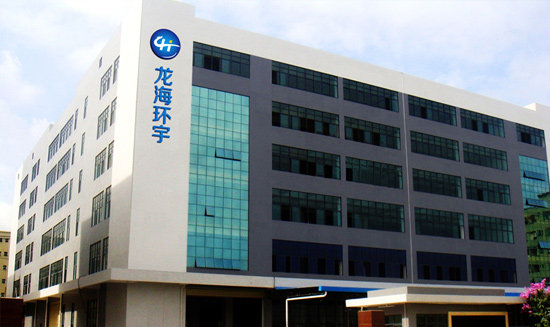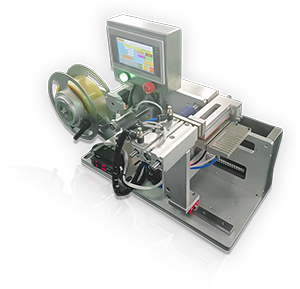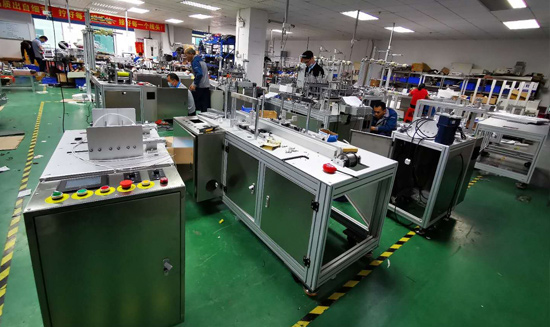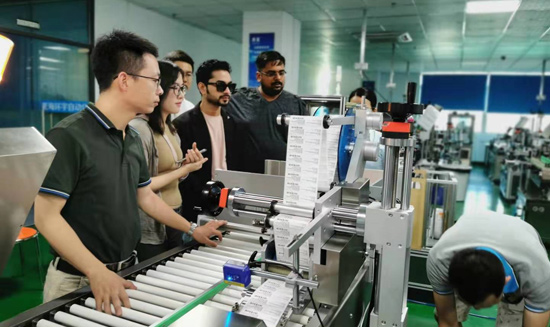前推式标签飞达送料器技术解析与应用范围
一、定义与结构特点
前推式标签飞达送料器是一款专门为卷状标签设计的自动化供料设备,它借助“平台承载 + 前推式剥离”
的方式,实现标签的精准输送。其核心结构包含以下部分:
平台结构:采用具备防粘特性材料的平台,能够有效避免标签因胶粘问题而出现卡料的情况。
驱动系统:由步进电机或伺服电机驱动滚筒/齿轮,可实现低摩擦送料,且送料速度具备可调节功能
(例如支持 9 段速度调节)。
控制系统:集成了 PLC 或智能模块,支持运用光纤传感器进行定位(定位精度在±0.15mm 至±0.2mm
之间),并具备闭环反馈功能,可动态调整送料长度。
剥离机构:通过剥刀翻转或者机械式结构达成标签与底纸的分离,能够支持单排或多排标签同步进行剥
离操作。
二、工作原理
上料与张力控制:标签卷被固定在平台之上,张力装置可确保材料保持平整状态;放料轴能够兼容 75
mm 或 150mm 内径的标签卷。
驱动与定位:电机带动滚筒牵引标签向前移动,当光纤传感器检测到预设位置后,触发停机操作,进而
配合贴标设备完成标签的贴合工作。
精度保障:编码器能够实时监测电机的转速,摩擦刹车装置可防止因惯性导致的过冲现象,确保停机时
的稳定性。
三、典型应用场景
电子制造
适用于手机电池标签、FPC 补强片等精密辅料的贴合工作,能够支持±0.2mm 的贴合精度。
医药包装
可实现药品铝箔标签、说明书的连续输送,并与视觉系统联动,实现±0.1mm 级别的贴标精度。
食品与日化
能够满足瓶装/盒装产品标签的高速贴附需求(产能可达到 400 罐/分钟以上)。
四、技术优势与局限性
优势:
具备兼容单排/多排标签的能力,可适配柔性生产模式 对于超薄材料(厚度<0.1mm);
局限性:容易出现褶皱问题贴标精度较高(精度范围为±0.15mm 至±0.2mm) 在长周期运行过程中,
需要定期对传动部件进行维支持快速换料操作(采用抽拉滑轨设计) 初始购置成本高于简易振动送
料器
五、选型建议
参数匹配
速度方面:在中低速应用场景下,可选择步进电机;而在高速应用场景(例如产能达到 600 件/分钟
以上),则需要选用伺服电机。
材料厚度方面:对于厚度>0.15mm 的标签,优先考虑选择平台式送料器;对于超薄材料,需要定制
真空吸附方案。
品牌与维护
国产品牌推荐:龙海环宇(贴标精度可达±0.15mm)、宇祺精密(采用一体化设计)、三易智能(具
备 9 段调速功能)。
需要定期对同步带、轴承等易损件进行保养,以避免设备精度出现衰减。
六、总结
前推式标签飞达送料器凭借其“高精度、强兼容性”的特点,已成为电子、医药等行业的主流供料解决
方案。在进行选型时,需要结合材料的特性以及产线的具体需求,优先选择具备智能控制(如闭环反
馈功能)以及完善售后支持的品牌,从而提升设备的综合使用效率













 微信咨询
微信咨询